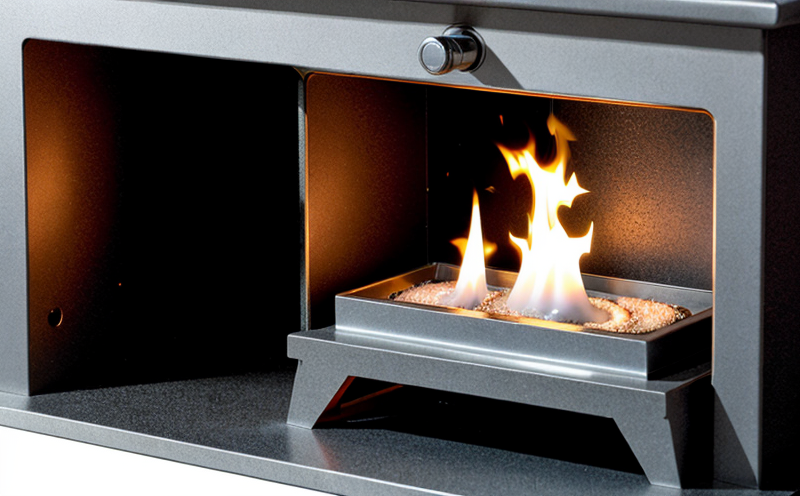In fire safety testing, surface flame spread testing is a critical assessment that evaluates how quickly flames can spread over the surface of construction panels and materials. This service is particularly important for ensuring compliance with local building codes and standards, such as those specified by NFPA 90, ASTM E84, and ISO 6702-1:2015. The purpose of this test is to provide a reliable means of measuring the rate at which flames spread across the surface of materials used in construction.
The testing process involves exposing a sample panel to an open flame and observing the behavior of the fire as it spreads over the material's surface. This allows for the calculation of the Flame Spread Index (FSI), which quantifies how quickly fire can spread along the surface. The test also measures smoke developed by the burning material, providing another crucial metric in evaluating a product’s performance during a fire.
For construction panels, understanding flame spread is essential because it directly impacts occupant safety and building structural integrity during a fire event. Flame spread testing helps identify materials that can significantly reduce the risk of fire propagation within buildings. This service is particularly relevant for residential, commercial, and industrial settings where fire resistance is critical.
The test setup typically involves placing the sample panel in a specialized apparatus designed to simulate real-world conditions. The flame is applied at one end, and the rate of spread along the length of the panel is measured using photometers or other optical devices. Smoke development is also quantified by measuring opacity levels in the smoke plume.
After testing, detailed reports are generated that include the FSI value, smoke obscuration data, and any additional relevant metrics. These reports provide critical information to architects, engineers, and builders who need to select fire-resistant materials for their projects. The test results ensure compliance with building codes and offer valuable insights into material performance under fire conditions.
The importance of this testing cannot be overstated in the context of fire safety. By identifying materials that perform well in flame spread tests, architects and engineers can design buildings that are safer and more resilient to potential fires. This service is a cornerstone of modern fire safety engineering, ensuring that construction panels contribute positively to overall building performance.
Additionally, this testing helps manufacturers improve their products by providing valuable feedback on how materials behave under fire conditions. The insights gained from these tests can lead to the development of new, safer materials and designs for future projects.
Industry Applications
| Material Type | Applications |
|---|---|
| Bamboo Panels | Residential construction, furniture manufacturing |
| Fiberboard | Commercial building facades, interior partitions |
| Wood-based Panels | Industrial facilities, residential insulation |
| Plastic Composites | Infrastructure projects, marine construction |
The results of surface flame spread testing are applicable across various industries where fire safety is a critical concern. For instance, in the furniture industry, the test can ensure that materials used for upholstery and interior fittings meet regulatory requirements. In the residential sector, this service helps architects design homes that comply with local building codes regarding fire resistance.
In commercial buildings, the testing ensures that partitions, ceilings, and other structural elements contribute to overall fire safety. For industrial facilities, flame spread testing is essential in ensuring that materials used in infrastructure projects meet stringent safety standards.
Eurolab Advantages
At Eurolab, we pride ourselves on providing comprehensive surface flame spread testing services with a focus on accuracy and reliability. Our state-of-the-art laboratory facilities are equipped with the latest technology to ensure precise measurements of flame spread indices and smoke development.
- ISO/IEC 17025 accreditation: Ensuring that our tests meet international standards for quality and competence.
- Experienced personnel: Our team comprises experts with extensive experience in fire safety testing, ensuring consistent high-quality results.
- Comprehensive reports: Detailed reports are provided to clients, offering a full understanding of the test outcomes and their implications for product development and compliance.
- Flexible scheduling: Our service is tailored to meet client needs, whether it's a one-off test or ongoing support for new material developments.
We understand that fire safety testing can be complex, but our team is dedicated to simplifying the process. Whether you're an architect, engineer, manufacturer, or specifier, Eurolab offers a range of services designed to meet your specific needs. With our expertise and advanced facilities, we ensure that every test conducted is not only accurate but also meets all relevant international standards.





